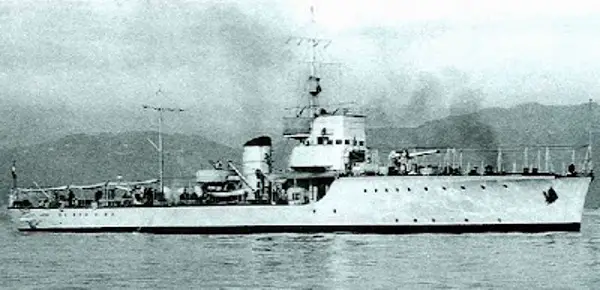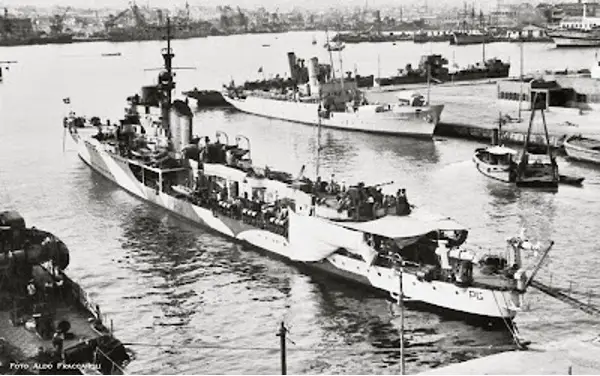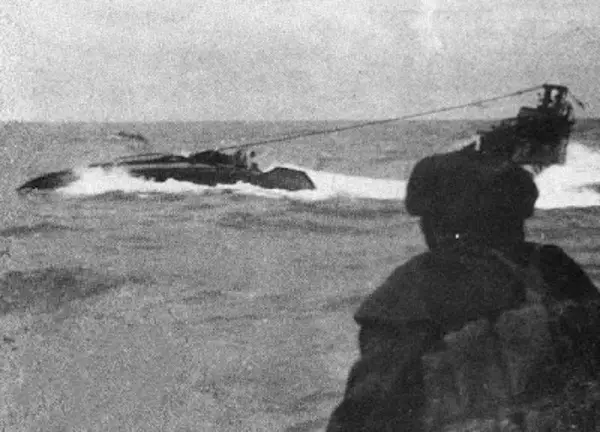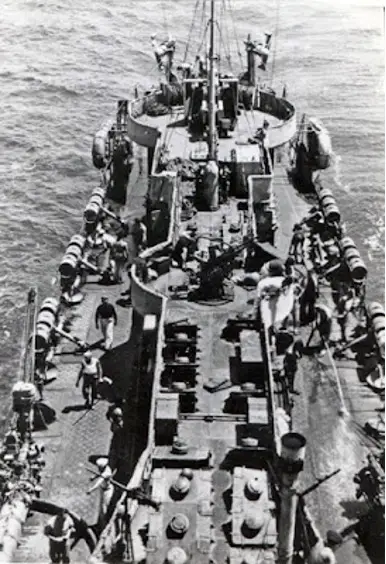Pre-war situation
It is fair to see that when Italy declared war on France and Britain in June 1940, its navy was extremely unprepared for antisubmarine warfare (ASW). This is because Italy did not have any effective sonar devices nor adequate ships or the required training. In WW1 Italy had to deal with the submarine threat posed by German and Austro-Hungarian U-Boots and the Regia Marina managed to face it with different types of vessels and early hydrophones, adequate for WW1 standards. In the interwar years, antisubmarine warfare was given almost no attention until the construction of the submarine chaser Albatros. This ship, built on purpose for hunting down enemy submarines, tested various types of hydrophones and the first Italian sonar, the SAFAR 600, in 1939. The hydrophones were considered almost useless because the ship’s engine would have disturbed the acoustic search unless proceeding at very low speeds (around 4 knots). The sonar earned more promising results, but SAFAR engineers took it off for further improvements, which did not arrive in time by the outbreak of the war. In the late 1930s, the navy realized its weakness in ASW and ordered the construction of four Orsa class torpedo boats, a development of the Spica class but with increased range and depth charges launchers. Thus, Italy entered the war with no modern submarine detection systems and few purpose-built escort vessels usable for ASW.

The submarine chaser “Albatros”
Early operations
When Italy entered the war, the vessels that could carry out convoy escort duties and ASW were essentially the four Orsa class torpedo boats (later classified submarine chasers), the Albatros, the 32 torpedo boats of the Spica class. There were also former WW1 era destroyers, downgraded to torpedo boats that could fit the role, together with a good number of small auxiliary vessels tasked to carry out antisubmarine patrols along the coasts and in the proximity of main ports. For the first year and a half of war, Italian vessels relied on hydrophones and optical sightings to locate and hunt down allied submarines in the Mediterranean theatre. Often, the aircraft escorting the convoys were able to sight the silhouette of the enemy submarine or the bubbles created by the torpedoes launched. Attacking the located target with bombs, depth charges and also machine guns could alert the escort vessels of the presence and approximate location of the enemy submarine. However, from summer 1941, the increasing number of British submarines in the Mediterranean complicated the situation for the axis convoys directed to Libya, this required the adoption of new and much more effective devices for ASW.
Sonar arrives
With the Italian industry not ready or capable of producing improved sonar devices, the Regia Marina asked the German Kriegsmarine to provide their sonar apparatus, known as S-Gerät. By the end of 1941, the torpedo boats Orsa, Castore, Sagittario and Lince received sonar, such devices were operated by German personnel on board these ships, while Italian personnel was sent to Germany to undertake the ad-hoc training at the Kriegsmarine school in Gotenhafen. By June 1942, 12 destroyers, 18 torpedo boats and 16 other auxiliary units had received the S-Gerät. From early 1943, the new Corvettes of the Gabbiano class started to enter service, these were excellent ships, designed on purpose for escort duties and ASW. However, despite some success, they arrived too late and, in few numbers, to turn the tide of the Mediterranean war.

Torpedo boat Pegaso in August 1942
Notable actions of Italian vessels
On the 30th July 1941, the old torpedo boat Generale Achille Papa was escorting a merchant ship in the Gulf of Sirte. They were attacked by the submarine HMS Cachalot, which fired with its gun while emerged, probably identifying the Italian warship with a merchant vessel. The Generale Achille Papa turned towards the Cachalot firing with its guns, intending to ram the enemy submarine. The collision severely damaged the Cachalot which eventually sunk in the space of 10 minutes. Luckily, almost all the crew members were rescued by the Italians.
On 12th February 1942, the Circe, while escorting the steamer Bosphorus in the Gulf of Taranto, received the order to conduct an antisubmarine sweep near the Calabrian coast. This was requested following the sinking of the tanker Lucania by the submarine HMS Una. On 13th February at 3.02, the Circe spotted the British submarine Tempest on the surface, which immediately dived but Circe made sonar contact and attacked with depth charges which damaged the submarine. In the next five hours, Circe attacked again and later sighted fuel oil and air bubbles on the surface. The shattered HMS Tempest emerged, and Circe kept it under fire with its 100mm guns. The Tempest was quickly abandoned and eventually rescued 23 survivors.

HMS Tempes sinking seen from Circe
On the 6th of August 1942, the torpedo boat Pegaso was escorting the steamer Ischia when the German Ju88 of the air escort started to fire its machine guns in a sea zone ahead of the Italian ships. The Pegaso located an enemy submarine with its sonar (the HMS Thorn) and launched its depth charges in seven consequential attacks. After 50 minutes, sonar contact was lost and sailors spotted oil on the surface, signalling the destruction of the submarine.

Depth charges ready on their launchers onboard the Pegaso
Epilogue
From June 1940 to September 1943, the Royal Navy lost 40 submarines in the Mediterranean, most of them sunk by Torpedo boats or mines. Italian torpedo boats and corvettes lost amounted to 44, five were sunk by submarines while the majority was lost to aircraft and mines. Evaluating ASW actions, Supermarina (the Italian Navy high command) judged that attacks carried out without sonar devices were considered successful in 35% of cases, this increased to 65% when sonar was employed. Given the poor starting situation, Italian ASW operations can be considered satisfactory, however, the few vessels and sonar devices available, coupled with the general overstretch of the Regia Marina did not stop British submarines to strike major successes.
Sources
German Antisubmarine Equipment on Italian Vessels Pt. 1. (2009). Taken from Crusader Project: https://rommelsriposte.com/2009/07/15/german-antisubmarine-equipment-on-italian-vessels/
German Antisubmarine Equipment on Italian Vessels Pt. 2. (2015). Taken from Crusader Project : https://rommelsriposte.com/2015/12/06/use-of-german-sonar-on-italian-vessels-pt-2/
German Sonar on Italian Vessels – Pt. 3. (2015). Taken from Crusader Project: https://rommelsriposte.com/2015/12/07/german-sonar-on-italian-vessels-pt-3/
Greentree, D. (2016). British submarines vs Italian torpedo boats. Osprey publishing.